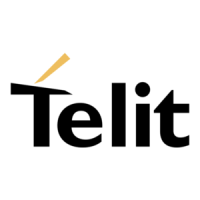ME910C1 mPCIe HW Design Guide
1VV0301642 Rev. 2 Page 9 of 56 2022-01-14
Target Market
ME910X1-mPCIe can be used for wide variety applications, where low power consumption
and low cost are required while sufficient data rates are achieved:
• Applications using the mPCIe connector
• Notebook PC
• M2M applications
Main Features
•
Multi-RAT cellular modem for voice and data communication
• LTE FDD Catx data rates per the module variant used.
• Carrier aggregation is not supported
• GSM/GPRS/EDGE (when available)
• Regional variants with optimal choice of RF bands
• coverage of countries and MNOs
• State-of-the-art GNSS solution with
GPS/GLONASS/BeiDou/Galileo/QZSS receiver
USIM ports – dual voltage
• Class B and Class C support
• Hot swap support
• Clock rates up to 4 MHz
Application processor to run customer application code
• Flash + DDR are large enough to allow for customer’s own software applications
•
USB2.0 – USB port is typically used for:
• Flashing of firmware and module configuration
• Production testing
• Accessing the Application Processor’s file system
• AT command access
• High-speed WWAN access to external host
• Diagnostic monitoring and debugging
• Communication between Java application environment and an external host
CPU
• NMEA data to an external host CPU
• Peripheral Ports – I2S, UART
• GPIOs
Full-Mini Card 52 pin, 50.95mm x 30mm x 1mm.
The entire module is designed and qualified by Telit for satisfying the environment and
The module generates all its internal supply voltages.
No dedicated RTC supply, RTC is supplied by 3V3_AUX
Table 2: Main features

